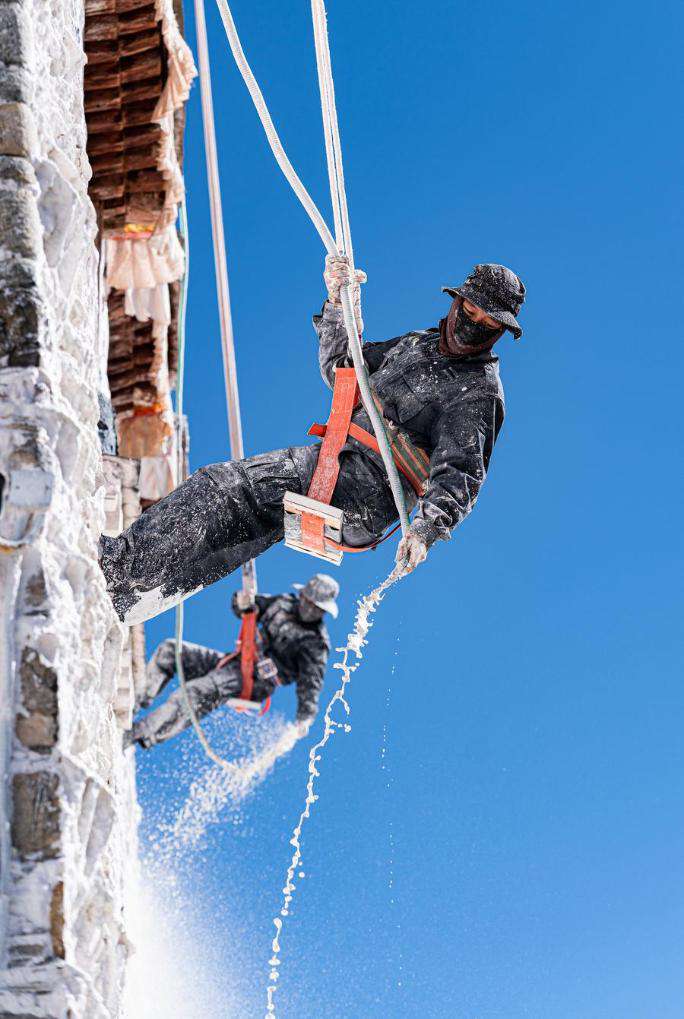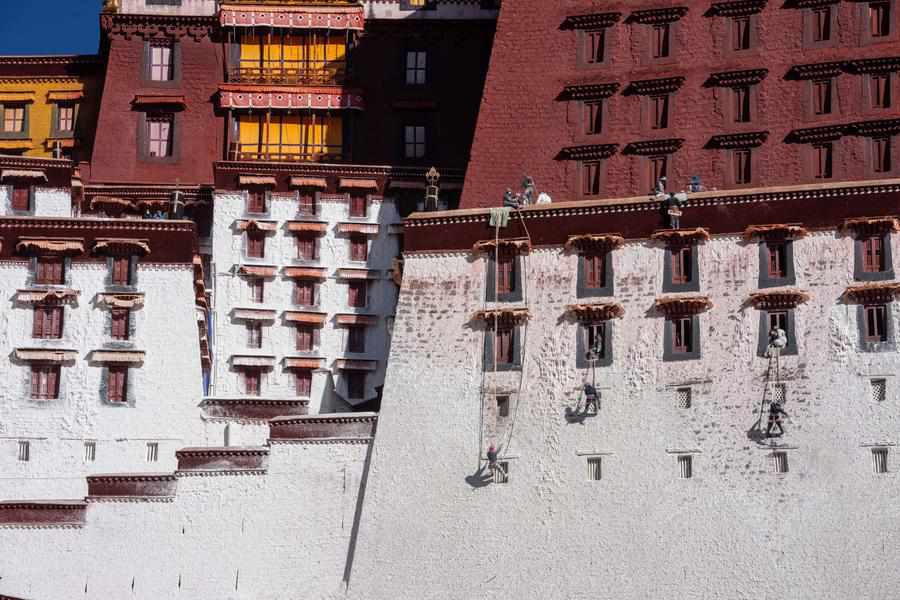Unremitting preservation efforts keep ancient Potala Palace young
From:XinhuaAuthor: 2024-12-18 16:23

The Potala Palace is seen in Lhasa, southwest China's Xizang Autonomous Region, Jan. 18, 2024. (Xinhua/Jigme Dorje)
On a viewing platform near the Potala Palace in southwest China's Xizang Autonomous Region, many tourists, each holding up a paper note, have lined up for an opportunity to take a photo with the majestic palace.
Printed on the back of the 50-yuan note is the Potala Palace, a World Heritage site located in the regional capital Lhasa, with a backdrop of a vibrant sky and fluffy clouds.
On Dec. 17, 1994, the Potala Palace was inscribed on the UNESCO World Heritage List.
Over the past decade, it has welcomed over 14.4 million visitors from home and abroad. "Without the two large-scale restoration projects, it would have been impossible for the palace to reach such a tourist reception capacity," said Kunga Tashi, deputy director of the palace's management office.
The Potala Palace is perched atop Mount Marpori, meaning "red hill" in Tibetan, in central Lhasa. It was built by Tibetan King Songtsen Gampo in the seventh century and expanded in the 17th century.
It is home to invaluable scriptures, historical documents and precious relics, such as a thangka painting of Qing Dynasty (1644-1911) Emperor Qianlong and a mural depicting the story of Princess Wencheng, who came all the way from Chang'an (today's city of Xi'an) to marry Songtsen Gampo over 1,300 years ago.

Workers paint the wall of the Potala Palace during an annual renovation of the ancient architectural complex in Lhasa, southwest China's Xizang Autonomous Region, Oct. 29, 2024. (Xinhua/Jigme Dorje)
CONSTANT PRESERVATION EFFORTS
Due to insect infestations, wood deformation and cracking, roof leaks and other challenges over the years, the palace with the earth-stone-wood structure received its first major restoration from 1989 to 1994.
With a total investment of 55 million yuan (about 7.65 million U.S. dollars), the central government earmarked 15 kg of gold and 54 kg of silver, and the regional government bought precious materials, including pearls, red coral and turquoise, for the restoration project.
Donden Tsering, a carpenter who participated in the project, recalled that worm-infested and bent wood was replaced during the repair process.
"The wooden components of the Potala Palace are like the bones of the human body and the replacement of the damaged wood has largely helped stabilize the ancient architecture," said Donden Tsering, now 63.
In 2002, the State Council officially approved three major renovation projects in Xizang -- the Potala Palace, the Norbulingka and the Sakya Monastery, marking the start of a seven-year-long renovation project of the palace with an investment of 204 million yuan.

A worker paints the wall of the Potala Palace during an annual renovation of the ancient architectural complex in Lhasa, southwest China's Xizang Autonomous Region, Oct. 30, 2024. (Xinhua/Tenzin Nyida)
Champa Kelsang, the former director of the management office, said that the second major renovation project was a landmark cultural heritage protection project that fully respected tradition, science and ethnic styles.
"The renovation was done by people of various ethnic groups, including Tibetans and Han people, and its benefits will last for generations to come," said Champa Kelsang, who participated in the entire renovation process.
In addition to major restorations, the maintenance department of the palace's management office has employed over 60 local traditional artisans, such as carpenters, tailors and painters, to conduct regular "check-ups" and minor repairs.
OLD RELICS, NEW LIFE
The palace has also embarked on a range of projects incorporating technological advancements, including structural monitoring, data collection of murals and preventive conservation of movable cultural relics in the palace. The digital resources have given new life to the traditional cultural heritage.

Workers paint the wall of the Potala Palace during an annual renovation of the ancient architectural complex in Lhasa, southwest China's Xizang Autonomous Region, Oct. 30, 2024. (Xinhua/Tenzing Nima Qadhup)
The ancient palace is home to about 40,000 volumes of precious ancient books and documents including Buddhist scriptures and medical, historical and dramatic works. By the end of this year, China has invested 83.45 million yuan in digitizing and archiving some of these items.
"We will carry out cataloging, classification and other tasks for the digitization work, which will fill in the gaps in the existing database of documents in the Potala Palace," said Paldron, an antiquarian invited to join in the work.
Over the past 30 years, the Chinese government has poured nearly 800 million yuan into projects including repairs on the palace's main structure, restorations of the golden roof, structural monitoring, preservation and utilization of ancient books and documents as well as an online ticketing system, according to its management office.
Edit:董麗娜
The copyright of the article and the picture belongs to the original author. If there is any infringement, please contact to delete it